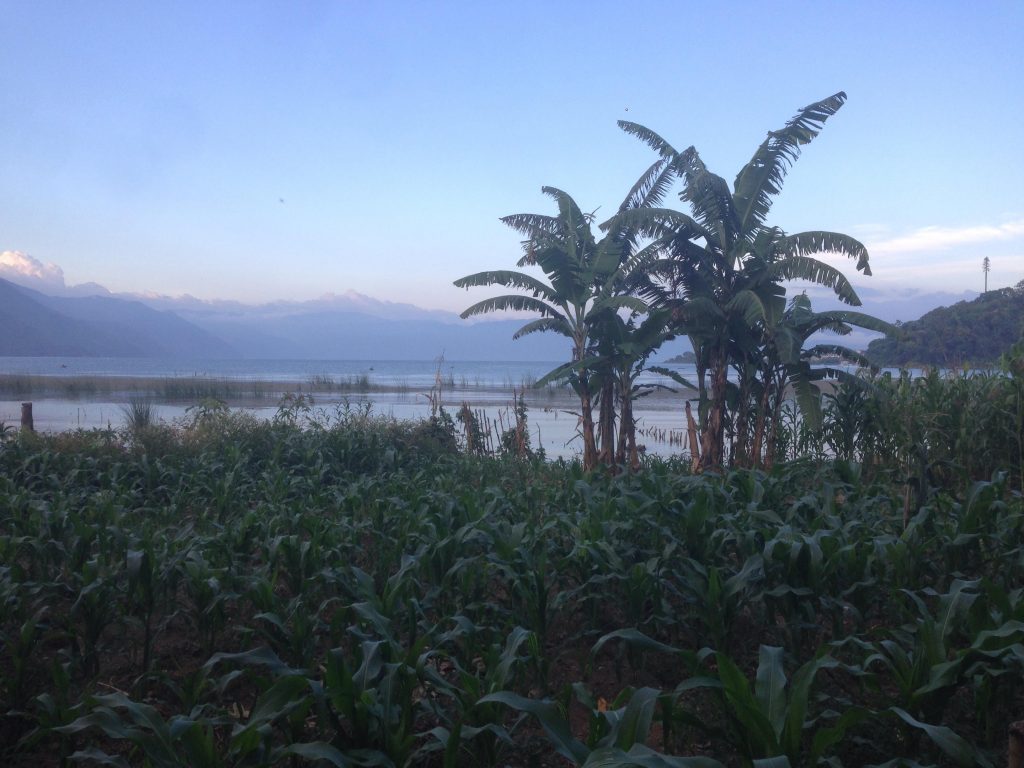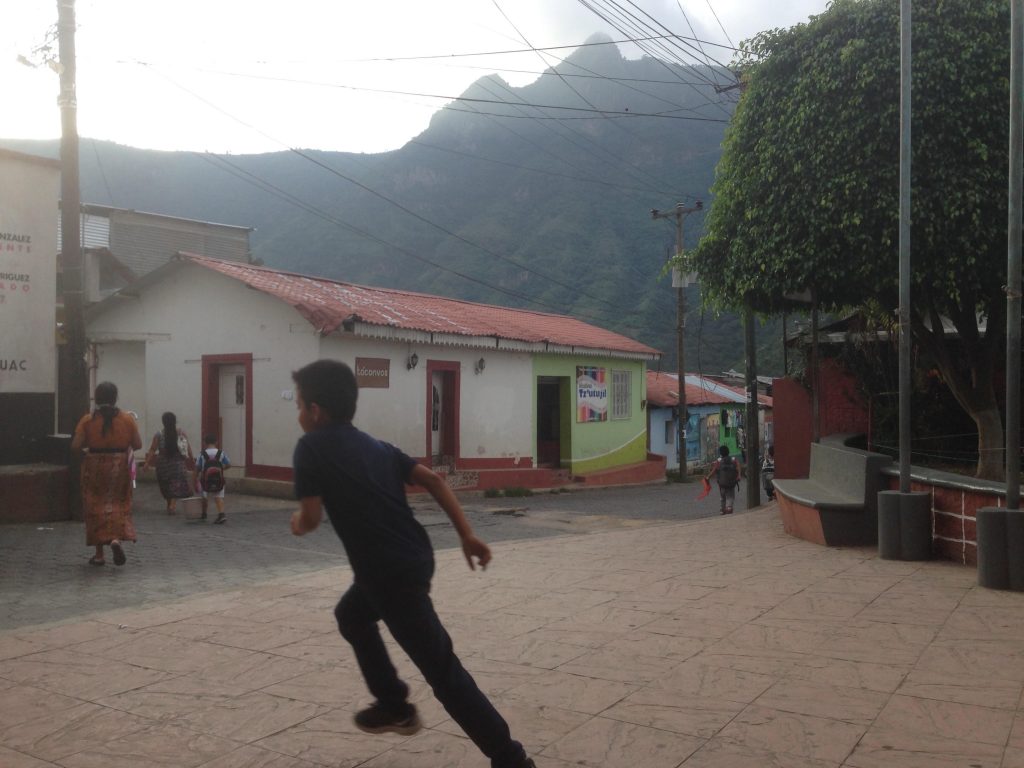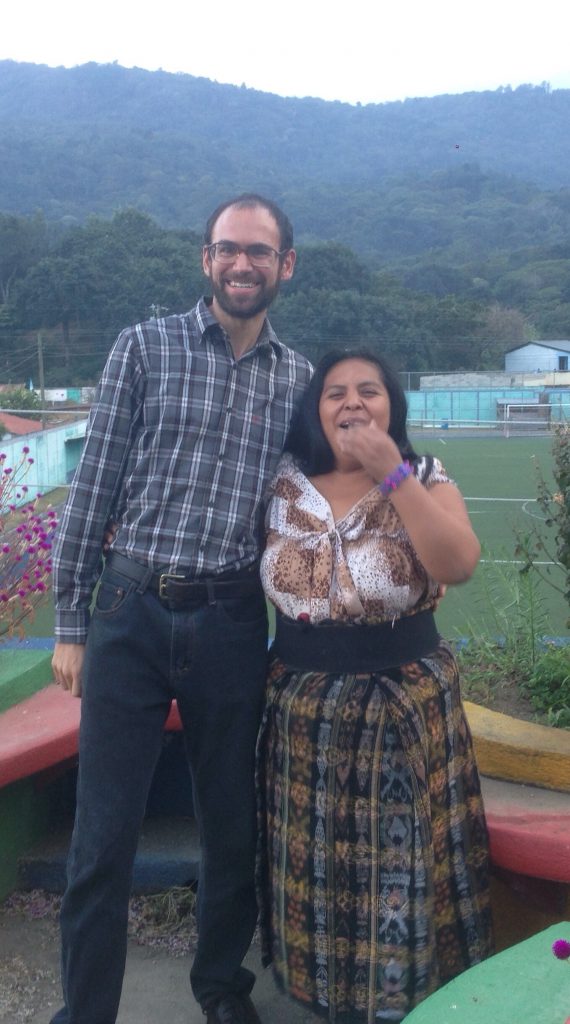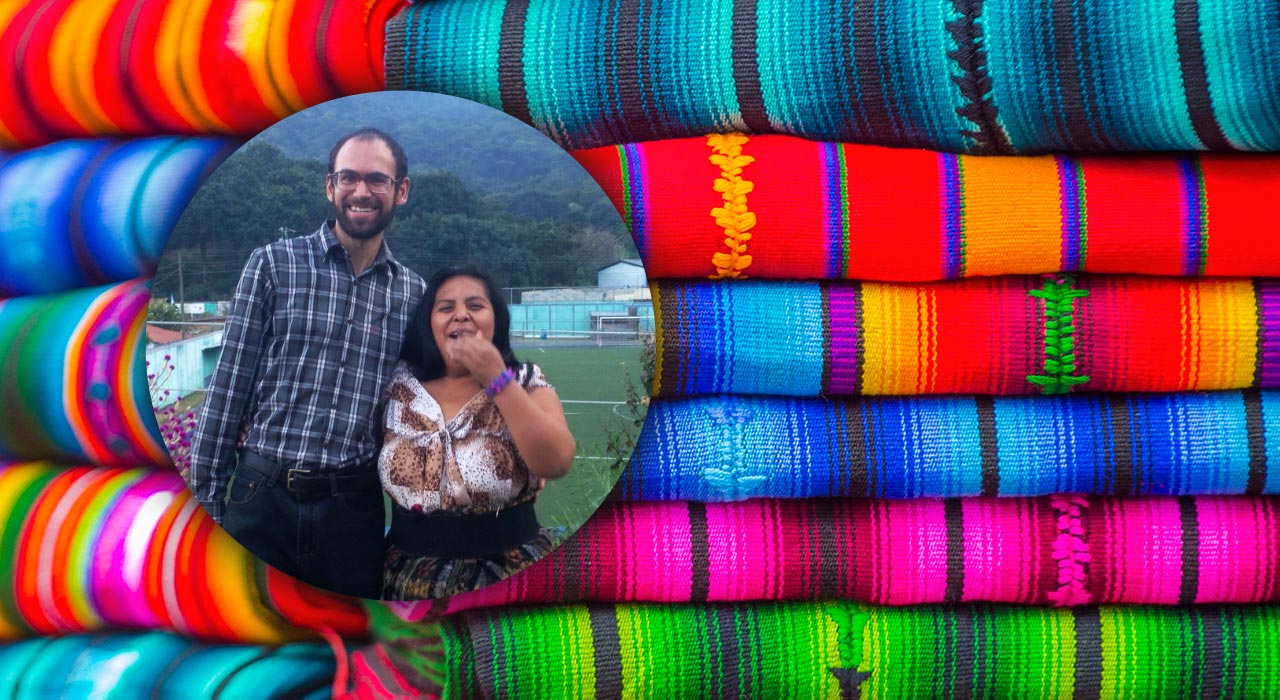Mayan Languages: How I Learned to Speak Tz’utujil in Guatemala
Have you ever wondered what ancient Mayan languages sound like?
I did.
My curiosity, in fact, led me to the indigenous town of San Juan La Laguna in Sololá, Guatemala where I volunteered my time at a health clinic and studied the language of Tz'utujil in my spare time.

Six months have passed and I haven’t been able to leave. I’ve had too much fun.
What is the Tz'utujil language?
Tz'utujil is a Mayan language considerably younger than its ancestor K'iche' which predates it by thousands of years. When I first arrived in San Juan La Laguna I was pleasantly perplexed by what I heard spoken on the streets. It sounded like a peculiar form of Arabic. With a sound system characterised by glottal stops, clicks (I'm not kidding) and unorthodox consonants such as the ‘j','r' and ‘l' sounds, my ears had never experienced anything like it. Some say that the clicks were inspired by chickens.
The three main languages spoken along the shores of Lake Atitlan (K'iche', Kaqchikel and Tz'utujil) could be, but are not considered, dialects of one another. They are close enough to be mutually understood by many speakers, albeit with some difficulty. Another interesting feature of these languages is how easily they morph from generation to generation and even from town to town.
Guatemala’s Disappearing Mayan Languages
When the Spanish colonised Latin America, they nearly succeeded in obliterating all evidence of one of the most advanced civilisations on earth. Calendars, religious texts and descriptions of the cosmos were burned, but the living languages of the Maya survived!
They're still spoken today.
Guatemala has 22 officially recognised indigenous Mayan languages, many of which are edging closer to endangerment or extinction. With an estimated 47,000 speakers, UNESCO has classified Tz’utujil as vulnerable but not endangered.
Since the peace accords of the mid-1990s, efforts have been made to revitalise these languages with only limited success. Ultimately, the younger generations are more inclined to opt for Spanish for various reasons.
All Mayan languages are presumed to stem from one original, theoretical, proto-Mayan language. Scholars generally agree that this ancient language branched into about five or six major language groups, one of which is K’ichean which includes both the K’iche’ and Tz’utujil languages.
While many Mayan languages are closely related, others share little in common save for some grammatical and phonetic features. Tz’utujil and Kaqchikel, for example, might be considered as close to one another as Spanish and Portuguese, whereas Mam and K’iche’, both spoken in the city of Xela but belonging to different language groups, are mutually incomprehensible.
Is Learning a Mayan Language Difficult?
As I continue to study Tz'utujil, I've made up my mind that it's not difficult. Why not? Because if you say it's difficult, then of course, it becomes difficult.

It’s curious how different languages reflect different decisions about how their native speakers break the world up into concepts. The presence or absence of certain expressions and grammatical features tells a story about how the world is perceived. For example, in Tz’utujil the verb ajob’eneem can be translated as to love, to want and to accept. K’utuneem can be translated as to ask for as well as to teach. Furthermore, what English-speakers would consider to be past and future are understood in Tz’utujil in terms of completion and potential.
Personally, understanding these subtle differences in perception constitutes a major motivating force for me in learning a language. Given that the roots of Tz’utujil date back thousands of years, it seems intuitive that the living language itself provides insights into the cosmovisión (world view) of the ancient Maya.
In this post, I'd like to share some insights I’ve gained on fruitful ways to go about learning an indigenous language. I’ll also discuss some of the challenges I’ve faced, and how I’ve overcome them. I hope you’ll find something useful in what I share, whichever language you are learning.
So, onto my seven tips on how to learn indigenous languages. Here goes:
Tip 1: Seek Out the Elderly
One of the things that blew me away when I arrived in San Juan La Laguna was seeing wide and authentic grins on the faces of the elderly, which is almost unheard of in my country, where old folks are sequestered from society in retirement homes and geriatric institutions.
There is no division here between young and old. People of all ages are well-integrated into society, but there are generational differences. In terms of language, the ancianos of San Juan, though they can understand Spanish, typically speak very little of it. Instead, they converse almost exclusively in pure, unadulterated Tz'utujil.
The reverse is true for the youngsters. Among the youth, there can be a certain vergüenza about speaking Mayan languages, a certain sentiment that they are slightly backwards, uncivilised and out of touch with modernity.
If you want to learn a Mayan language, then, it is imperative to seek out the elderly for conversational practice! Luckily, they're some of the friendliest people around.
Tip 2: Hang Out in San Pablo: The Town with No Tourism
Three kilometers north of San Juan La Laguna (Xe´ Kuku´ Aab´aj in Tz´utujil), an offbeat sister town named San Pablo La Laguna (To k´or juyu´) hides in the shadows. San Pablo is also Tz'utujil speaking, but there is virtually no tourism there. It seems to be the butt of all jokes in San Juan. If Lake Atitlan were a high school, San Pablo would be the kid that everyone makes fun of, but never to his face because they're afraid they'll get beat up.
San Pablo has a reputation for being poor, unhygienic, “tough” and just generally backwards.
This is the type of place you have to go to really learn a Mayan language. Why? Because if you walk down the streets of San Pablo, you won't hear a single person speaking Spanish. You will, however, hear plenty of hip-hop and witness a thriving evangelical community. Oddly enough, hip-hop and evangelical Christianity have something in common in that both are, in their own respects, social movements designed to spread a message and appeal to marginalised groups. Aside from these two notable exceptions, however, San Pablo has remained remarkably resistant to outside influences compared to its neighbours. In other words, it is one of the most authentic towns, and the ideal place to learn Tz'utujil.
Seek out the San Pablo of your indigenous language community and figure out a way to spend time there.
Tip 3: Talk to Tuk-tukeros and Tortilleras
When you’re learning an indigenous language, it’s a good idea to talk to whoever you can in the language.
Some of my best conversations in Tz'utujil have been in the tortillerías, the small nearly-empty rooms inhabited by only a stove, a bowl of masa and three women slapping tortillas together with Toyota Prius-like efficiency (FYI: There are no Toyota Priuses in Guatemala). While you sit on a stool and wait for your tortillas, you'll have the opportunity to practice. Everyone in there will be speaking Mayan, except for the kids. Don't be shy! Tell them what you did that day. Ask them about theirs (all they've done is make tortillas).
In my case, I fell in love with one of the tortilleras and asked her out, five times. She never really said yes or no. A wise man once said that anything other than a yes is no, but that didn’t stop me from persisting. How do you ask a girl out in Tz'utujil? La nawajo' naatij kape' wik'iin ja chuwaq (do you want to drink coffee with me tomorrow?) will work. Technically, you should ask her parents first, which I didn’t.
In the tuk-tuks, the little red go-carts that shuttle people around Guatemala at a speed of about two kilometers an hour, you'll have the opportunity to strike up dialogue with passengers and drivers. Most of them will ask you about Donald Trump.
Chicken buses, which are former US school buses that have been flamboyantly refurbished for the Guatemalan esthetic, also offer excellent speaking opportunities. They constitute the most economical (and blood-curdling) method of travel in the country. For the record, I’ve never seen a chicken on one. Locals refer to them as camionetas and in Tz’utujil the name for them is nimachijch (big metal thing). They blow a whistle that sounds like a locomotive and light up like Las Vegas at night, though it’s safer to ride them during the day. They would not pass emissions inspections in any country with any environmental standards. When you get on one, you’re in for a wild ride! You’ll either be crushed by other passengers or find yourself sliding off your seat while a reckless driver, with absolutely nothing to lose, accelerates into each turn. These buses, as I mentioned, are a fantastic place to practice your Mayan language. Be aware that the person sitting next to you may not speak the one you’re learning. For example, the bus from San Pedro La Laguna to Xela typically carries a mix of K’iche’ and Tz’utujil speaking passengers.
Tip 4: Scavenge for Educational Materials (They Can Be Hard to Find!)
During the Guatemalan civil war, in many communities indigenous people, language and culture were under attack. Following the peace accords of 1996, powerful movements were born with the aim of strengthening and revitalising Mayan languages in Guatemala, many of which were and are still dying out. If you’re interested in reading more about this, I’d recommend reading the 1998 paper Mayan Languages and the Mayan Movement in Guatemala by Ajb'ee Odilio Jimenez Sanchez.
Out of this movement, the Academy of Mayan Languages (ALMG) was born. ALMG promotes Mayan languages in Guatemala in part through its publication of educational materials for school children. Luckily, you can also purchase these materials at their offices scattered throughout the country. There is no Rosetta Stone for Tz'utujil, and online materials are scarce. However, the materials developed by ALMG are of high quality and come in a variety of media including textbooks, magazines, audio and video. There's only one caveat: you'll have to know Spanish in order to make any sense of them.
Tip 5: Be Prepared to Start from Ground Zero
If you're like me and have learned a handful of Latin languages, by learning an indigenous language you’ll enjoy the challenge of having absolutely nothing handed to you (except a Westernised alphabet).
If you already spoke Spanish and Portuguese, for example, learning how to speak Italian would be akin to learning ukulele when you already play guitar and banjo. No big deal. Now try learning the bagpipes.
Unless you already speak another Mayan language, you'll be starting from ground zero which means you have to be patient with yourself. If you're an English speaker learning a romance language, you get a lot of words for free (e.g. “composition”, “description”, “revitalisation”, etc). Not so with indigenous languages; you will have to earn every word. The
silver lining? There will be no false cognates to trip you up. Plus, you'll discover in a whole new way how another group of people choose to arbitrarily break up the world.
When I first got to San Juan, I struggled to tell the faces of my coworkers apart. Everyone looked the same until I got to know them. And it was the same with nouns and verbs in Tz'utujil (e.g. k'amooneem, k'uluuneem, k'aqooneem, k'ulub'aaneem, k'otz'ooleem, ka'muluuneem). Are you kidding me? In terms of grammar, you may struggle to make sense of directionals, ergative subject/object relationships and Mayan prepositions, which some say don't exist. Finally, you will have to learn to produce all the curiously charming sounds that characterise your chosen Mayan language, which brings me to my next tip.
Tip 6: Walk Around Making Funny Noises
I learned to roll my Spanish Rs in Jamaica Plain's Arnold Arboretum walking around like a madman saying guitarra over and over again. It worked! People looked at me strangely, but it worked.
In San Juan La Laguna, it took me a while to be able to pronounce the glottalized q' which is essentially a click from deep within the throat. One of my teachers described it as the most serious sound in Tz'utujil. For months, I couldn't find it at all. Then, maybe one out of a hundred tries I could get it. Certain words were more conducive to success. For example, I found the sound more easily with the word ruuq'a' (his arm) than with the word q'iij (day). But in the end repetition was the most important ingredient.
Whenever I went for a walk, I repeated ruuq'a' over and over until I could get it one out of fifty, twenty-five, ten, five and eventually every other time. Across many of the Mayan languages, the phonology is similar. For an English speaker, there are a few tricky sounds but nothing that can't be overcome with a little determination and locura (insanity).
Tip 7: Enjoy Making People Laugh (At You!)
This much is true: When you start speaking a Mayan language in Guatemala, you will make everyone in the room laugh, in addition to the people standing outside.
If I've learned anything about Mayan culture in the six months that I've been here, it's that these people love laughing. They value it over almost any other activity, except making money. And nothing could be funnier to an indigenous Guatemalan than a kaxlan winaq (foreigner) speaking his or her mother tongue cumbersomely.
Of all the San Juaneros with whom I spoke Tz'utujil, no one laughed harder than my coworker Elena. She didn't even try to restrain herself. Every word I uttered in Tz'utujil would send her into an uncontrollable fit of foot-stomping hysterics. I started saying things to her just to get her going.

Truthfully though, although the folks in your Mayan community may (will) laugh at you, their faces will also light up, huge smiles will come across them and their eyes will grow wide when you start speaking their language. They may even thank you. For some, you will make them proud of their heritage. Don't be surprised if they start opening up to you in ways that they didn't when you spoke to them in Spanish.
Finally, expect to gain a deeper understanding of their culture beyond the usual tourist-friendly façade. The takeaway message: it all starts with you making a fool of yourself.



Social